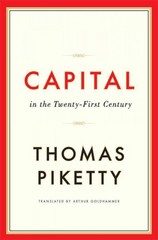Question
Go to the Collectibles section of eBay (http://collectibles.shop.ebay.com/) and pick any subcategory that looks interesting to you. Find an auction that is just about to
Go to the Collectibles section of eBay (http://collectibles.shop.ebay.com/) and pick any subcategory that looks interesting to you. Find an auction that is just about to end and bookmark it. When the auction has ended, return to the auction page and click on "Bid History."
The assignment is to use the bid history to construct a demand curve.
(You will have to "reorder" the bids a bit to figure this out. Try to figure out the maximum price that each of the bidders is willing to pay, and then use that information to construct the demand curve.)
HELPFUL NOTES:
Only count the highest bid for each bidder. If one bidder bids $25 but then later bids $50 and then never bids again, it must be that his maximum willingness-to-pay is $50; the $25 bid is irrelevant. If the bidder had been willing to bid more than $50, he probably would have bid more than $50.
Remember that demand is about willingness to buy something. So if there are 4 bidders in the auction, then that means that at some prices there were 4 willing buyers, even though there's only 1 item. Note that in an auction, the price rises until there is only one willing buyer left. If there are two or more willing buyers, then the auction isn't over yet!
Pick an item with at least 3 bidders, so you have something interesting to draw. This means the number of bids must be at least 3, but could possibly be more. It may take some searching.
You may search other areas of eBay as well, but I like Collectibles because it usually features one-of-a-kind items, which helps explain why the one highest bid ends up being the selling price.
Make sure you unclick to eliminate "Buy it Now" items from the listings, because these will not generally be helpful.
Step by Step Solution
There are 3 Steps involved in it
Step: 1

Get Instant Access to Expert-Tailored Solutions
See step-by-step solutions with expert insights and AI powered tools for academic success
Step: 2

Step: 3

Ace Your Homework with AI
Get the answers you need in no time with our AI-driven, step-by-step assistance
Get Started


